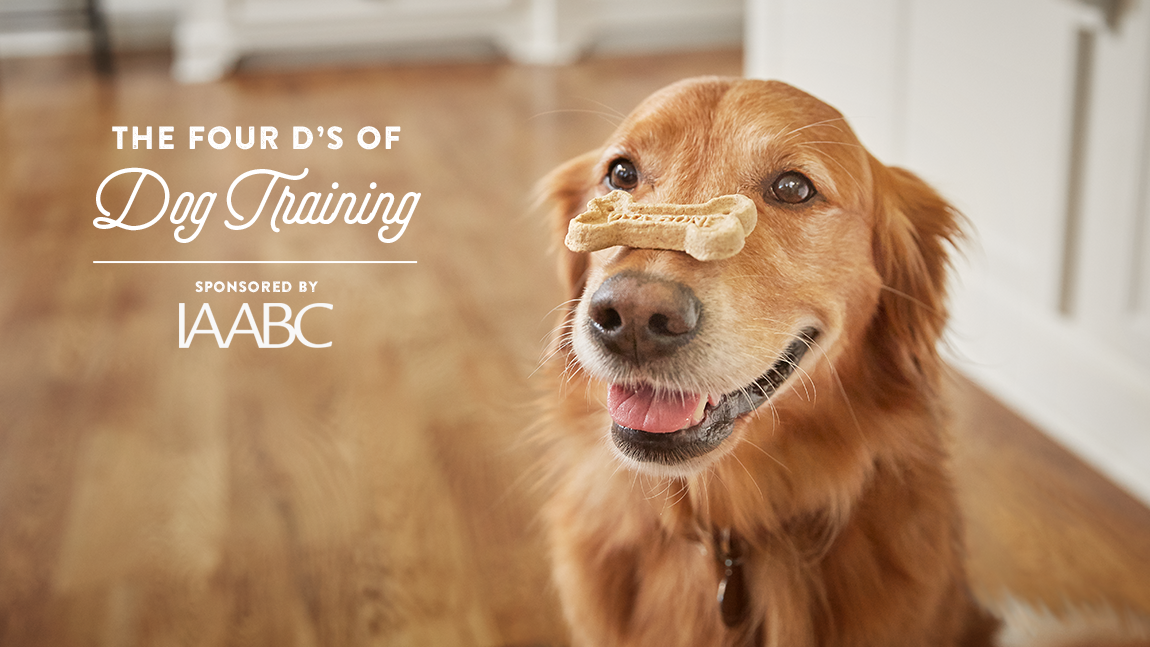By Marjie Alonso, IAABC
Good training requires paying attention to four simple rules, otherwise known as the four D’s of dog training: distance, distraction, duration and difficulty. You can use this list (along with Vita Bone® treats, of course!) as a training tool when helping your pup succeed in learning new skills. Remember that when increasing one “D” it’s important to decrease the others, so that you and your dog can have fun learning and find success!
Distance
Simply put, distance is the amount of space between the trainer and the dog. A trainer increases distance by building on success in small increments: Once a dog can stay at one foot away, build to 1.5-feet and so on. If a dog can’t stay at two feet, go back to where he can stay and practice some more. If you don’t feel like you’re getting anywhere, check which other D might be affecting his ability to succeed.
Distraction
Anything competing for your dog’s attention is a distraction, and a well-trained dog can follow cues even in the face of a squirrel running by or a sandwich on a park bench. When teaching new skills, it’s best to begin with no distractions. You can gradually build attention and confidence by adding distractions in a controlled way (by increasing distance, for instance, from that sandwich), and by giving plenty of Vita Bone® treats as reinforcement for when your dog focuses on you!
Duration
Duration represents the amount of time a dog engages in a behavior. If your dog goes to his mat during family meals, for example, duration is how long the dog can remain on that mat without extra training help. Can he stay under a café table while you have drinks with friends? Sit for one minute at a crosswalk while you wait for the light to change? Building duration is done in small increments, like with all training successes, so start at whatever amount of time your dog can be successful and go from there.
Difficulty
How hard is the behavior to learn or practice for that dog, in that setting, on that day? Just like with all the other D’s, there are many layers to consider. Rolling over may be physically difficult for some dogs (make sure you’re not asking your dog to do something painful!). Is your dog able to stay, even with a carrot at arm’s length? How about a french fry? Once your dog is successful with the other three D’s, it’s time to increase the degree of difficulty.
Start by gradually adding one D into your training at a time. If your dog can’t be successful, go back and make the training easier, because it’s your job to be sure they succeed. Remember to always lower the other D’s when adding or increasing the D you’re focusing on!
